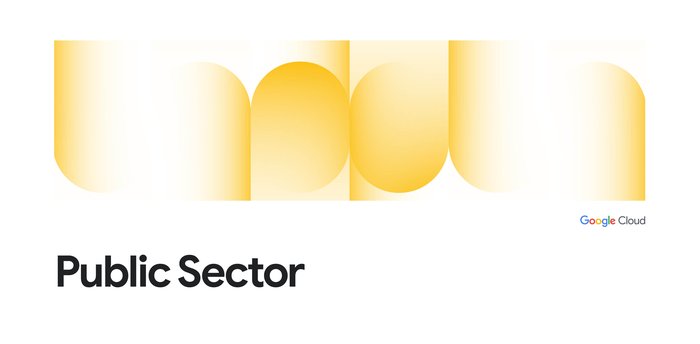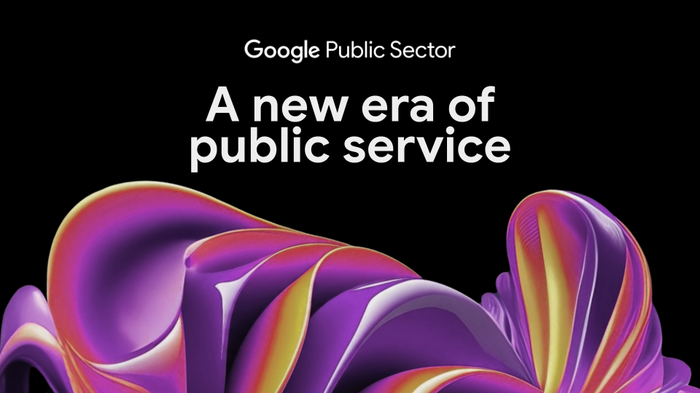50 Years of the Internet: Celebrating the vision of Vint Cerf and Bob Kahn and Exploring the Future of Connectivity and Innovation
Christian Burbach
Director, Defense, Google Public Sector
To learn more on the impending data revolution, and what the future holds for data connectivity, view this on demand recording.
When Vint Cerf and Robert Kahn presented a groundbreaking paper at the University of Sussex in 1973, and later published in 1974 called “A Protocol for Packet Network Intercommunication,” they understood its significance. This paper outlined the foundations for the Internet’s fundamental communication protocol: Transmission Control Protocol (TCP). It eventually became TCP/IP when the “Internet Protocol” (IP) was separated out as a distinct layer in the architecture.
They didn't know exactly what the Internet would grow into, but they were already thinking about the functionality computers would have beyond isolated desktops and limited networks. This year marks the 50th anniversary of the paper that transformed the way we communicate, live, and work. We’re celebrating by looking back at its impact over the last 50 years and where it might take us in the next 50.
How TCP/IP changed the way data moves
Cerf and Kahn's paper proposed a system in which packets of data could be transmitted over a decentralized network of networks of interconnected computers, with each packet containing the sender and receiver addresses. This design allowed for a flexible and resilient network that could route data around failures and congestion. Such routing was key to creating something on the scale of the Internet today. Recognizing its potential, the Department of Defense (DoD) Defense Advanced Research Projects Agency (DARPA) funded the earliest versions of the network establishing TCP/IP on ARPANET and the Defense Data Network. This paved the way for the development of the Internet as we know it.
The Internet enabled the development of the World Wide Web and its evolution has been facilitated by the development of optical fiber networks and mobile smartphones. Social media, e-commerce, cloud computing, and 5G would not have their present utility without the contribution of Cerf and Kahn. At the start of 2023, more than 5 billion people around the world use the Internet, roughly two-thirds of the world’s total population. Today, the Internet serves as a platform for innovation, creativity, and collaboration on a global scale.
Navigating the opportunities and challenges that lie ahead
As we celebrate, we must also recognize how we’re all shaping the future of the Internet. Cybersecurity, data privacy, digital inclusion and ethical use of data are challenges we navigate. And while we layer new technologies onto Cerf and Kahn’s foundational work, we define the standards of our digital age. Information pollution, like air pollution, challenges our information infrastructure and its utility and reliability. Harmful practices through the abuse of networked computational tools pose serious accountability challenges globally.
The planetary scale of the internet and abundant compute power have enabled innovative opportunities such as the creation and popularity of generative artificial intelligence (AI) which has the potential to alter the way we interact with the Internet and its computational and information assets. Vast amounts of training data enable generative AI models to create increasingly realistic and complex content. Large Language Models like Google’s LaMDA and PaLM along with tools like Vertex AI are already creating new opportunities in various industries.
Generative AI is poised to usher in a new wave of interactive, multimodal experiences that transform how we interact with information, brands, and one another. Harnessing the power of decades of Google’s research, innovation, and investment in AI, Google Cloud is bringing businesses and governments the ability to generate text, images, code, videos, audio, and more from simple natural language prompts.
Realizing the potential of this technology means putting it in the hands of every developer, business, and government. To date, it has been difficult for organizations to access generative AI, let alone customize it, and at times the technology is prone to producing inaccurate information that could undermine trust. A decade ago, mobile ecosystems soared as businesses and developers gained safe, secure, and powerful tools suited to new form factors, interfaces, and interactions — and likewise, for generative AI to blossom, organizations need a new generation of tools that make it simple to build generative AI applications, or gen apps.
Looking ahead to the data revolution
The term “data revolution” describes the changes needed to respond to rapidly growing demand for digital services - demand that is further underscored by the DOD CIO’s recent publication of its Software Modernization Implementation Plan, the establishment of organizations like the Chief Data and AI Office, and programs like Joint All Domain Command and Control (JADC2) which aim to build a unified network to collect, analyze, and share data in real time. Modernizing technology infrastructure is crucial to staying ahead of demand and preparation in the in field within an evolving technological landscape. Newer technologies, such as AI and machine learning (ML) and 5G, are already transforming industries and creating new opportunities. Other transformational platforms like Google Cloud and Google Workspace connect people together—from classrooms and government agencies to research labs and manufacturing plants—to work and live while keeping their data secure.
We know that people will continue to make more technological breakthroughs in the next 50 years. We can uncover clues into what these changes will be by learning from the changes we've seen so far. To learn more about the impending data revolution, and what the future holds for data connectivity, view this on demand recording of DX23, where one of the "Fathers of the Internet” himself, Dr. Vint Cerf, sits down with data visionary Ki Lee to explore diverse perspectives and offer core insights into the future of data.



